|
Ruff
at Boundary Bay, British Columbia |
|
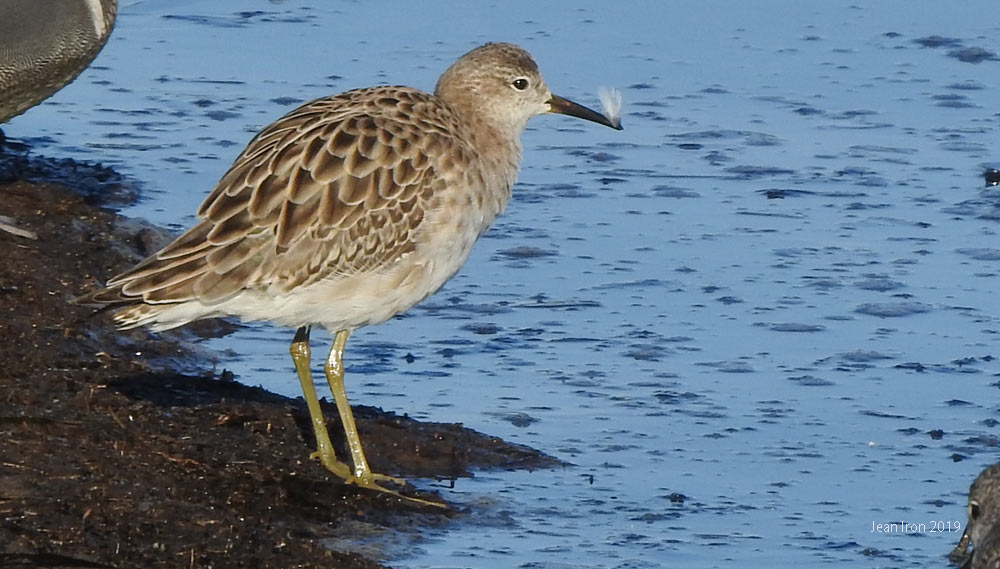 |
|
This Ruff in first winter plumage was in front of the 12th Street viewing stand at Boundary
Bay Regional Park near Vancouver, British Columbia on 29 January
2019. Please watch video as it struts about among Greater
Yellowlegs. |
|
|
|
I asked
Killian Mullarney, coauthor of the classic Collins Bird Guide to
the Birds of Britain and Europe, for comments on age. He said
"Thanks to the large extent of retained juvenile wing coverts the
Boundary Bay Ruff can readily be aged as a first-winter. Some
first-winters at this time of year have moulted most of the
visible-at-rest inner wing coverts and we need to look hard to
locate one or two tell-tale juvenile feathers. The scapulars and
mantle feathers, by contrast, have pretty much all been replaced in
the post-juvenile moult." |
|
|
|
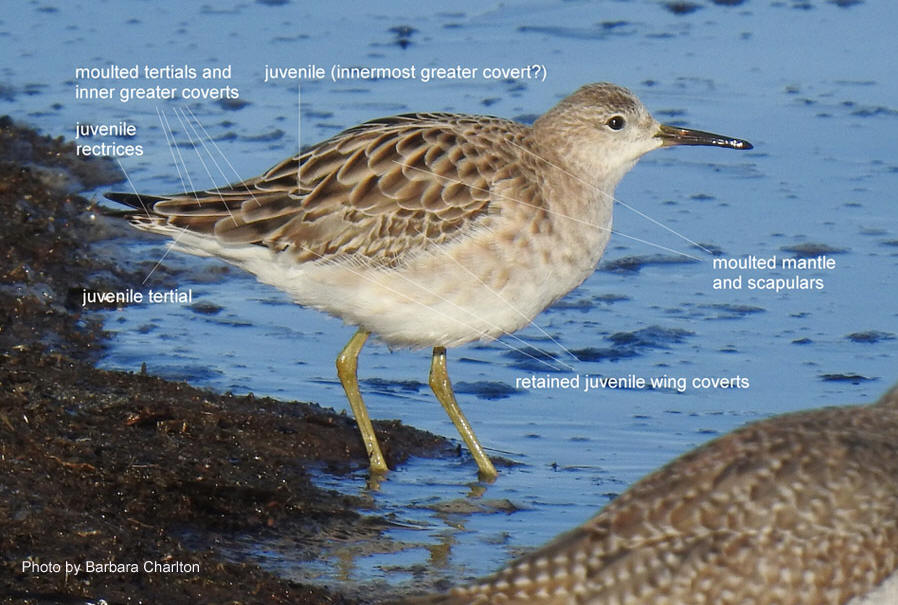 |
|
Killian Mullarney added annotations to the age of
the different feather tracts. Barbara Charlton, who was with me,
took this photo. Boundary Bay on 29 January 2019 |
|
|
|
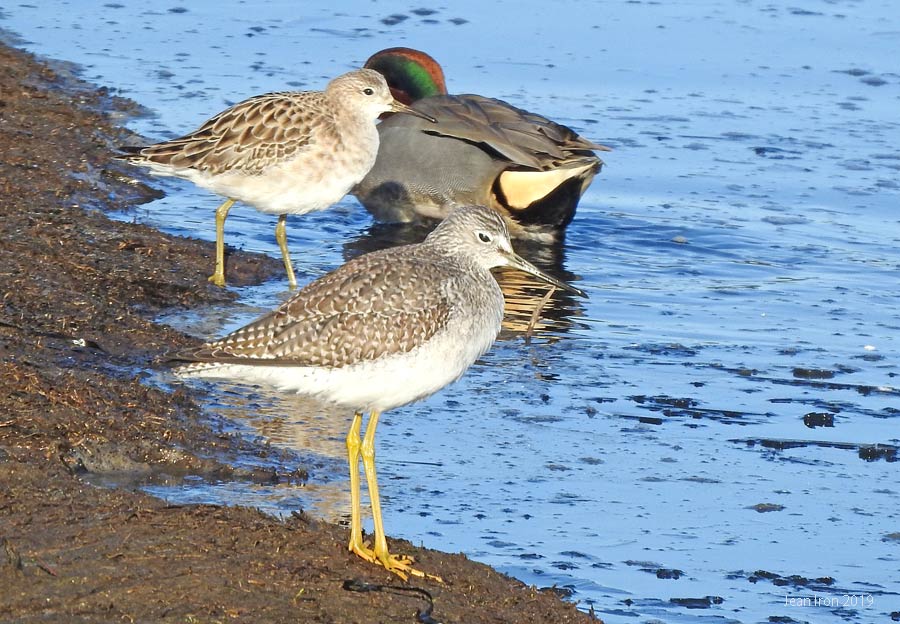 |
|
It was smaller than the Greater Yellowlegs. Its
legs were a greenish-yellow, its bill was shorter with a very slight
decurve and yellowish at the base. Boundary Bay Regional Park on 29
January 2019. Killian Mullarney also
commented: |
|
|
|
"Despite the rather large size difference between
males and females, sexing single Ruff is not always that easy, with
some seeming to fall somewhere in the middle, probably on account of
posture more than actual overlap in size. It is helpful here to have
several Greater Yellowlegs alongside for comparison, in the
video-clip. The average male Ruff should be around the same size as
a Greater Yellowlegs, whereas a female will be obviously smaller,
closer in size to a Common Redshank in my experience. Males often
look distinctly large-bodied and rather small-headed, whereas
females are generally not very different in proportions from, for
example, a Pectoral Sandpiper (though obviously not as long-winged
as Pectoral). Having viewed the video several times I am confident
that the Boundary Bay bird is a female, since it is so obviously
smaller than all of the yellowlegs it walks past." Boundary Bay on 29
January 2019. |
|
|
|
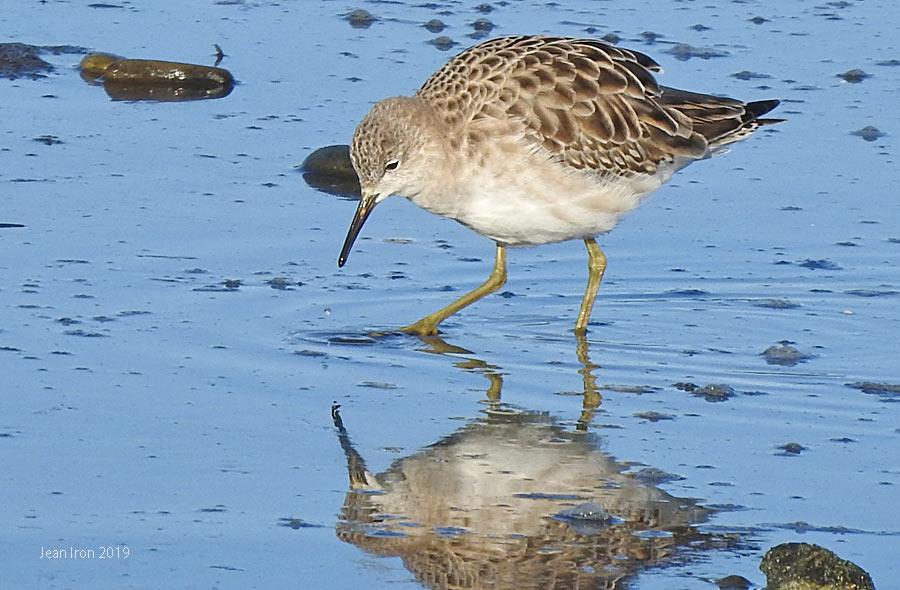 |
|
It's in first winter (basic) plumage with dark along
the shaft. The coverts are all the same and appear to be retained
juvenile coverts. Boundary Bay Regional Park on 29 January 2019. |
|
|
|
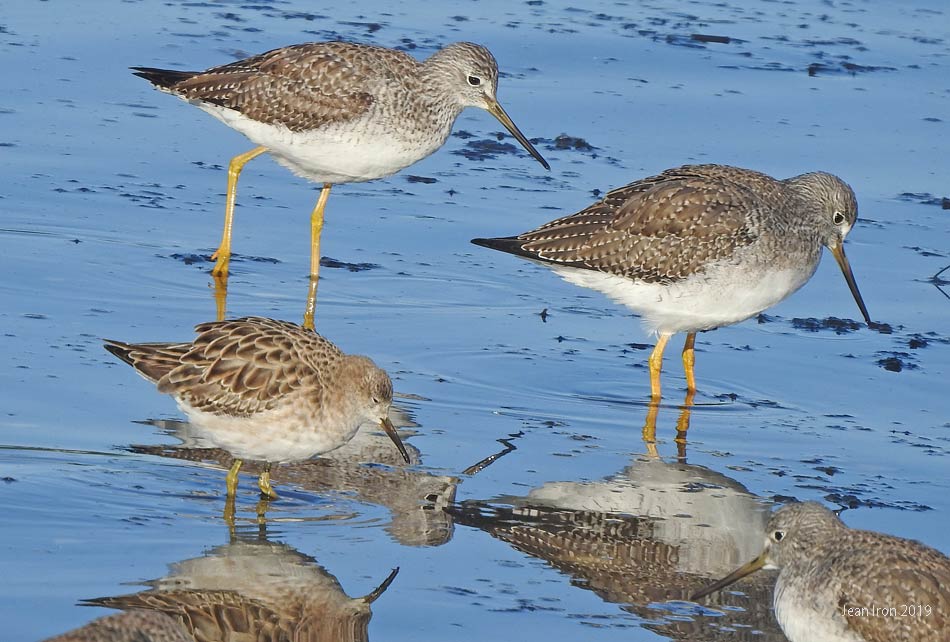 |
|
It's very different in shape and size from the
Greater Yellowlegs it generally stayed with. Boundary Bay on 29
January 2019. |
|
|
|
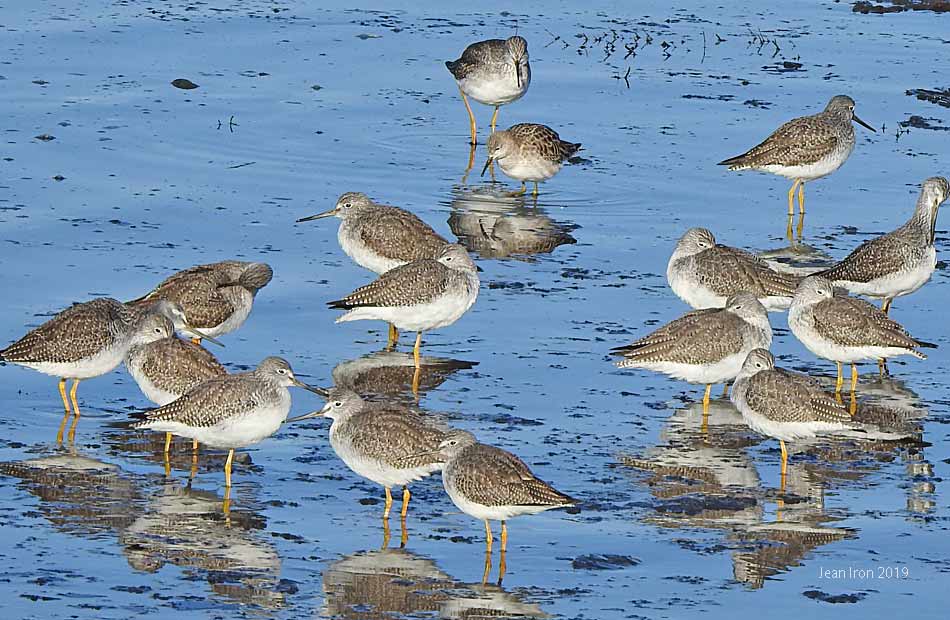 |
|
It has been in the area since November 2018, and possibly earlier.
Many reports and photos are on eBird. Barb Charlton and I were thrilled to see it up
close and in beautiful light. Boundary Bay Regional Park on 29
January 2019. |
|
|
|
|
|
|
|
|